History of the Temple – Sagrada Família
HISTORY OF THE BASÍLICA
The Sagrada Família is a one-of-a-kind temple, for its origins, foundation and purpose. Fruit of the work of genius architect Antoni Gaudí, the project was promoted by the people for the people. Five generations now have watched the Temple progress in Barcelona. Today, more than 140 years after the laying of the cornerstone, construction continues on the Basilica.
The Sagrada Família is a truly exceptional temple, the result of the work of genius architect Antoni Gaudí. Today, more than 135 years after the laying of the cornerstone, construction continues on the Basilica.
espai blanc
espai blanc
espai blanc
MAIN MILESTONES
1882
Project designed by Francisco de Paula del Villar.
Original design for the project for the Sagrada Família by diocesan architect Francisco de Paula del Villar following the prevailing guidelines of the time, with neo-Gothic elements: ogival windows, buttresses, flying buttresses and a pointed bell tower. Technical differences, about the cost of materials, led this architect to be replaced with another who was starting to stand out in the field, Antoni Gaudí, who took the project in a different direction, transforming it into an ambitious proposal for the church of the future.
On 19 March, Bishop Urquinaona lays the cornerstone of the Temple.
1883
Antoni Gaudí takes over the project, while still working on other buildings.
1885
Chapel of Saint Joseph inaugurated in the crypt and first masses held.
1891
Work begins on the Nativity façade.
1914
Antoni Gaudí begins working exclusively on the Temple, until his death.
1925
Saint Barnabas bell tower on the Nativity façade is completed.
The bell tower dedicated to the apostle Barnabas was the only one Gaudí would see finished.
1926
Gaudí dies and his disciple Domènec Sugranyes takes over the project.
1936
La Sagrada Família is vandalised during the Spanish Civil War.
1939
Francesc de Paula Quintana takes over site management, which is able to go on thanks to the material that could be saved from Gaudí’s workshop and that was reconstructed from published plans and photographs.
1952
Staircase on the Nativity façade is built, and the façade is lit up for the first time.
1954
Foundation laid for the Passion façade.
1955
The first collection is held.
1958
On 19 March, the feast of Saint Joseph, a sculpture group representing the Holy Family is put in place, created by Jaume Busquets.
1961
Museum created to explain historical, technical, artistic and symbolic aspects of the Temple to visitors.
1966
Francesc de Paula Quintana dies and Isidre Puig i Boada and Lluís Bonet i Garí take over.
1976
Bell towers on the Passion façade completed.
1978
Construction begins on the façades on the side naves.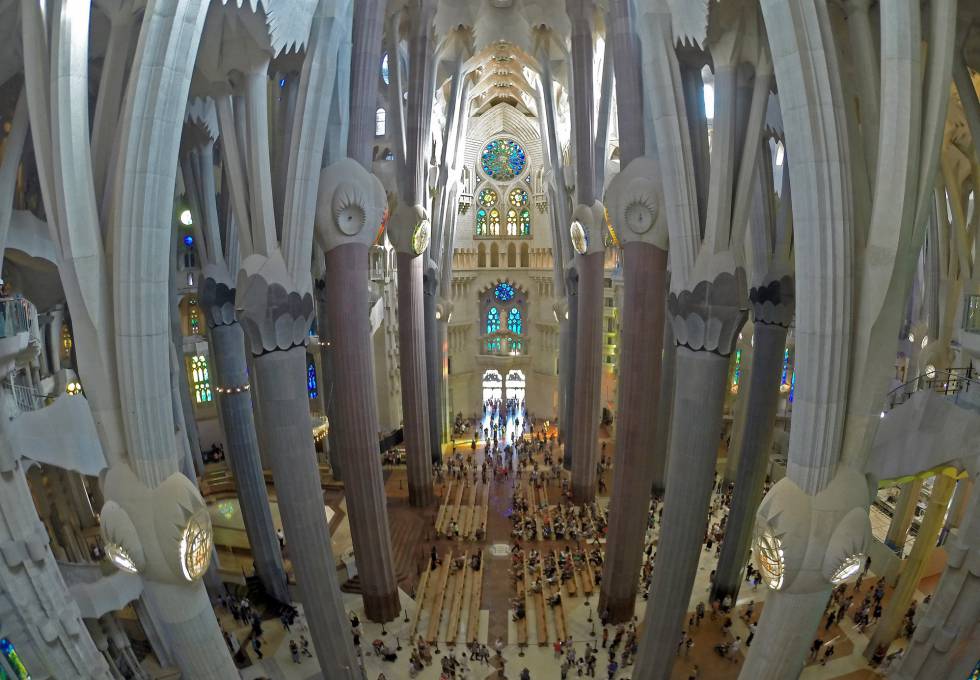
1983
Francesc Cardoner i Blanch takes over the project.
1985
Jordi Bonet i Armengol is named head architect and site manager.
1986
Josep Maria Subirachs is commissioned to make the sculpture groups for the Passion façade.
1986
Work began on the foundations for all the naves, the columns, vaults and façades on the main nave, transepts, crossing and apse. The works were completed in 2010.
Until the middle of the 20th century, construction was still done using wood scaffolding. A far cry from the means used today.
2005
The Nativity façade and crypt are named UNESCO world heritage.
2010
On 7 November 2010, Pope Benedict XVI consecrated the Basilica for religious worship and designated it a minor basilica.
2011
2010 Barcelona City Award in Architecture and Urban Planning goes to the Temple nave.
2012
Jordi Faulí takes over from Jordi Bonet as head architect and site manager for the works on the Temple of the Sagrada Família, which carry on according to Antoni Gaudí’s plans.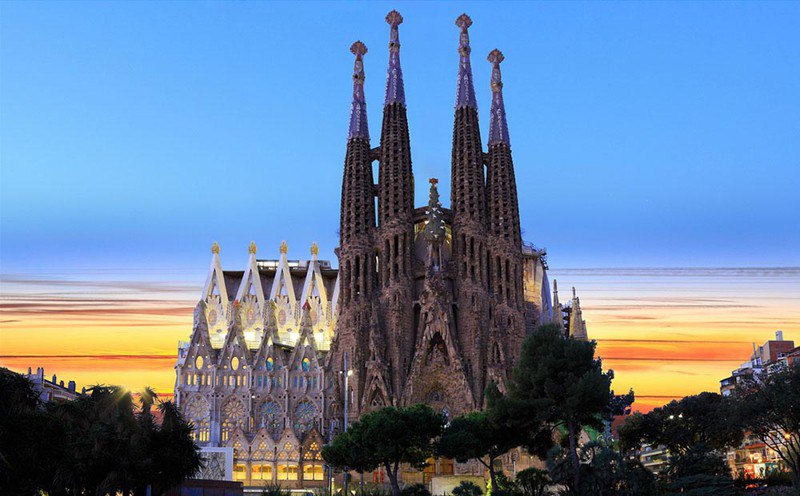
2016
Construction begins on the towers of the Evangelists, the Virgin Mary and Jesus Christ.
Work is completed on the western sacristy and the cloister of Our Lady of Dolours.
2018
July 2018 The Cross is placed on top of the pediment of the Passion façade.
2019
The first stone panels arrive for the tower of Jesus Christ, the tower of the Evangelists and the tower of the Virgin Mary and they start to take shape.
2020
February 2020 The tower of Jesus Christ and the tower of the Virgin Mary surpass the height of the towers on the Passion and Nativity façades.
March 2020 The Junta Constructora de la Sagrada Família stops construction due to the Covid-19 healthcare emergency.
October 2020 Work resumes, focusing on completing the tower of the Virgin Mary, with all the levels of panels in place and only the elements of the 25-metre pinnacle remaining, which will be crowned with a shining twelve-pointed star.
2021
In 2021 all efforts focus on finishing the tower of the Virgin Mary, the Basilica’s second tallest at 138 metres.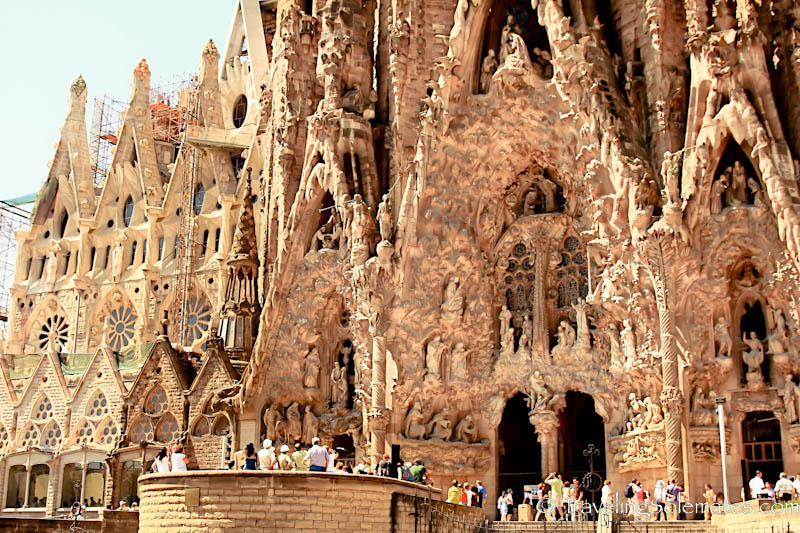
In April 2021, construction began on the shaft, the middle part of the pinnacle of the tower of the Virgin Mary, which is 18 metre tall and starts from six legs and ends in three arms that hold up the luminous star. During this month, the formwork and reinforcement for the lower third of the shaft was put in place, a piece measuring 10.8 metres tall that clearly changes the city’s skyline, since it raises the tower to a height of 127 metres. It is the longest piece (10.80 metres) that has been raised so far on the Sagrada Família.
In July 2021, the shaft was covered with trencadís mosaic. The lower part of the shaft is now in place. The upper and lower part of the shaft are covered with artistic ceramic stoneware trencadís mosaic in colours ranging from blue to white with a few scattered pieces of golden Venetian mosaic.
In September 2021, the upper third of the shaft of the tower of the Virgin Mary was put in place. With the upper third of the tower of the Virgin Mary put in place, the tower reaches 134 metres.
On November 9, the twelve wrought-iron stars that top the crown on the tower of the Virgin Mary were placed.
On November 29, the Sagrada Família lifted the star of the Virgin Mary into place. This was a historic moment, as it is the final piece of the tower and changes the Barcelona skyline.
On 8 December 2021, the Sagrada Família inaugurated the tower of the Virgin Mary with a mass as the central event and, afterwards, the blessing of the tower and the first lighting of the star on the second-tallest tower, which is now complete.
2022
In 2022, two of the four towers of the Evangelists were completed: Luke and Mark. The tower of Jesus Christ gained two levels, taking it up to the eighth out of twelve in total, standing at 125.85 metres. On 16 December 2022, the pinnacles of the towers of the Evangelists Luke and Mark will be lit for the first time. These are two of the four towers of the Evangelists that are part of the central group of towers. The towers of the Evangelists John and Matthew are expected to be finished in 2023 and the central tower of Jesus, in 2026.
espai blanc
espai blanc
espai blanc
Sagrada Familia History | 1882 to Today
The Basilica de la Sagrada Familia, more commonly referred to as the Sagrada Familia, is a Roman Catholic minor basilica located in Barcelona. The story of this still-under-construction masterpiece began all the way back in 1874 when a local organization began campaigning for the construction of a church honoring the Holy Family. After a couple of years of planning and drawing up plans, the church’s cornerstone was officially laid on 19th March 1882. This 19th-century church, which is still incomplete, is an architectural marvel and a UNESCO World Heritage site. Read on to know more about the history of the marvelous basilica.
Detailed Timeline of the Sagrada Familia Construction
1882: The design of the church is made by the architect Francisco Villar. That year, in March, Bishop Urquinaona lays the cornerstone of the basilica.
1883: Antoni Gaudi takes over from Villar.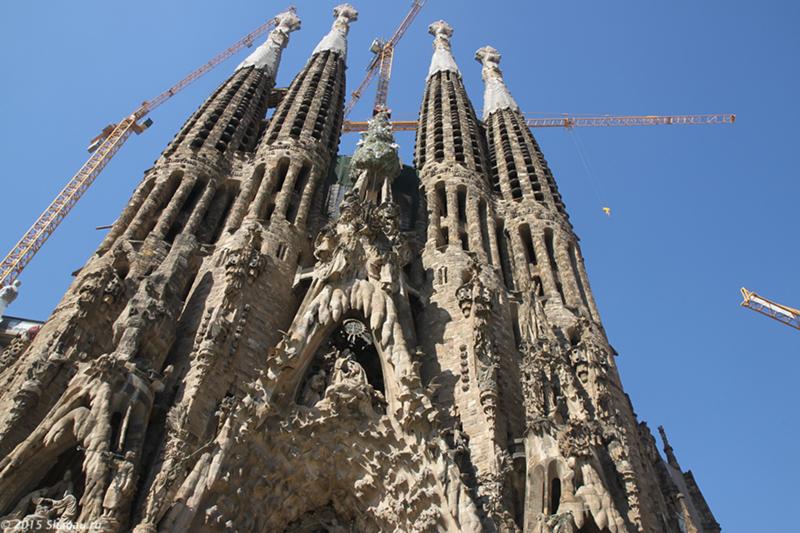
1885: The Chapel of Saint Joseph was inaugurated in the crypt. The first masses start to be conducted.
1891: Work begins on the famed Nativity Facade
1925: Saint Barnabas Bell Tower on the Nativity Facade is completed. This was the only completed structure Gaudi saw to completion before his death in 1926.
1936: Vandals enter the Sagrada Familia and destroy plans, photographs, and models of the basilica during the Spanish Civil War.
1939: Francesc de Paula Quintana takes over site management.
1952: The Nativity facade stairway is completed. The facade is lit for the very first time.
1954: Foundation laid for the Passion façade.
1961: Museum is created to explain the historical, cultural, and symbolic elements of the basilica.
1966: Isidre Puig i Boada and Lluís Bonet i Garí take over following Francesc de Paula Quintana’s death.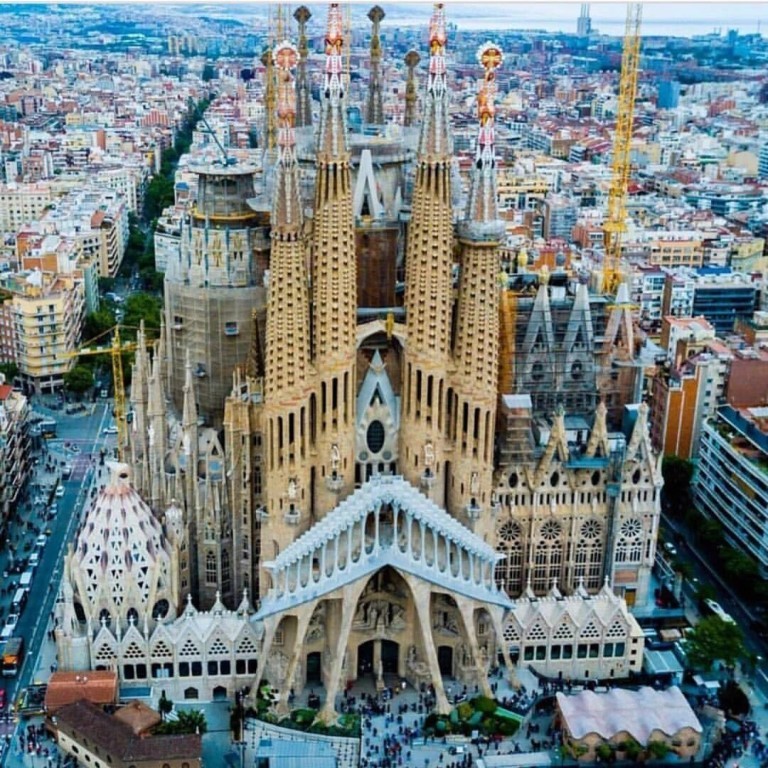
1976: Passion façade Bell towers are completed.
1978: Construction of the façades on the side naves begin.
1983: Francesc Cardoner i Blanch takes over.
1985: Jordi Bonet i Armengol is named head architect and site manager.
1986: Josep Maria Subirachs is commissioned to make the sculptures for the Passion façade. The same year, work began on the foundations for all the naves, the columns, vaults, and façades on the main nave, transepts, crossing, and apse.
2005: The Nativity Facade and the crypt are declared UNESCO World Heritage sites.
2010: Pope Benedict XVI consecrates the Temple, officially opening it for religious worship and given the status of a minor Basilica.
2012: Jordi Faulí takes over as head architect and site manager.
2016: Construction begins on the towers of the Evangelists, the Virgin Mary, and Jesus Christ.
2018: The Cross is placed on top of the Passion façade.
2020: The construction stops due to Covid-19 in March 2020, and only resumes in October.
2021: On 8 December, the tower of the Virgin Mary is inaugurated and construction of the Tower of Jesus continues.
History of Sagrada Familia
Plans for the Basilica Created
19th Century
While Antoni Gaudi is credited as the genius behind the Sagrada Familia, the Basilica was in fact the brainchild of the founder of the Spiritual Association of Devotees of St John, Josep Maria Bocabella. After his visit to Italy in 1872. he wanted to build a church inspired by the Loreto Basilica. Architect Francisco de Paula del Villar was tasked with designing the church and his design followed a Gothic revival style. In March 1882, the apse crypt of the church began being constructed. Later, in 1883, Antoni Gaudi took over the responsibility for the construction and radically changed the plan for the church.
Construction of the Basilica
Early 20th Century
During this time period, the Nativity facade’s work had begun. When Gaudi died, rather unexpectedly, in 1926, only 20 percent of the work was completed, with the finishing of the Saint Barnabas Bell Tower. Following his death, the work was taken over by his disciple Domènec Sugrañes i Gras until the unfortunate Civil War in 1936. During the civil unrest, many original plans, model structures, and workshops were destroyed by the Catalan Anarchists. The work only resumed after the Civil War, for which a new present design based on reconstructed versions of the destroyed plans along with modern adaptations were created.
Construction Resumes After Civil War
Late 20th Century
After 1940, the work on the Basilica changed hands several times; with architects Francesc Quintana, Isidre Puig Boada, Lluís Bonet i Gari, and Francesc Cardoner carrying on the work.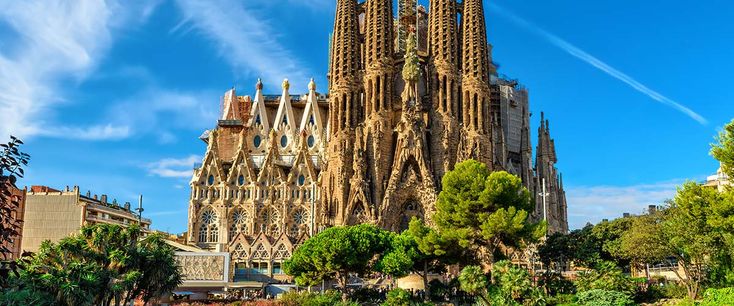
Technology Accelerates Construction
Early 21st Century
A number of elements were added to this basilica during this period of construction thanks to computer-aided technology introduced by Jordi Bonet i Armengol. In 2005, the Nativity facade and the crypt were declared UNESCO World Heritage sites and in 2010, the temple was consecrated by Pope Benedict XVI, officially making it a minor Basilica and opening it for religious worship. The central nave vaulting was completed in 2000 and the focus turned toward the construction of the transept and the apse.
Final Phase of Construction
In 2012, Jordi Faulí i Oller took over as the chief architect of the project and in 2015, he announced that 70 percent of construction was complete. The final phase of the construction included raising six steeples. Since July 2017, an international mass is celebrated at the basilica every Sunday. While the church has been functioning, several events have halted the progress of its construction. On 19 April 2011, an arsonist started a small fire in the sacristy, which took 45 minutes to contain. The pandemic halted work for 4 months between March to July 2020. Despite these challenges, on 29 November 2021, a 7-meter twelve-pointed illuminated crystal star was installed on top of the Mary Tower.
Architecture of Sagrada Familia
Exterior
The glorious architecture of the Sagrada Familia has influences from the Spanish European Gothic styles, Catalan Modernism and Art Nouveau. The plan calls for 18 spires that are well beyond 100m in height, each representing the 12 Apostles, the four Evangelists, Mother Mary and Jesus Christ.
Architecture & Design of the Sagrada Familia
Interior
The church plan takes shape of a Latin cross with five aisles. The central nave vaults are 45 meters in height while the side nave vaults stand 30 meters tall. The interior features columns that stand in a horseshoe pattern. The crossing rests on four central columns that support a massive hyperboloid structure with 12 complementing hyperboloids around it. The geometric intersections allow the visitor standing at the entrance to have a good view of the naves, crossing, and the apse. The gaps on the floor of the apse, allow the visitor to view the crypt below. The precision and intricacy of the design stand out and leaves one in awe..jpg)
The Sagrada Familia Interiors
Book Sagrada Familia Tickets
Priority Access to Sagrada Familia + Escorted Entrance
Instant Confirmation
Mobile Ticket
Flexible Duration
More details +
Fast Track Guided Tour of Sagrada Familia
Instant Confirmation
Mobile Ticket
1 hr. – 2 hr. 30 min.
Guided Tour
More details +
Combo (Save 5%): Park Güell + Sagrada Familia Skip-the-Line Tickets
Instant Confirmation
Mobile Ticket
Flexible Duration
Guided Tour
More details +
€44.65
Fast Track Guided Tour to Sagrada Familia with Towers Access
Free Cancellation
Instant Confirmation
Mobile Ticket
1 hr.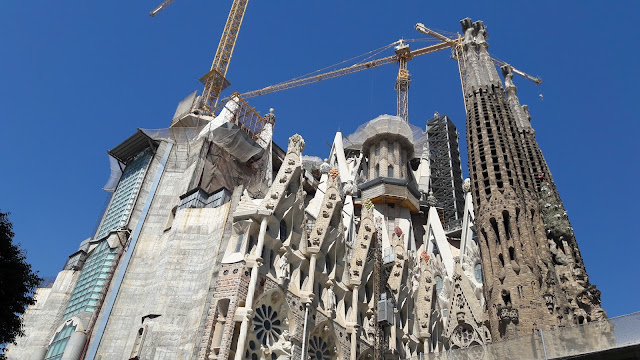
Guided Tour
More details +
Best of Barcelona: Guided Tour of Park Güell and Sagrada Familia
Free Cancellation
Instant Confirmation
Mobile Ticket
3 hr. 30 min. – 4 hr. 30 min.
Guided Tour
More details +
Best of Gaudí: Park Güell & Sagrada Familia Guided Tour
Free Cancellation
Instant Confirmation
Mobile Ticket
4 hr. 30 min.
Guided Tour
More details +
Day Tour of Sagrada Familia, Casa Vicens & Casa Mila with Fast-Track Entry
Free Cancellation
Instant Confirmation
Mobile Ticket
Audio Guide
More details +
€123.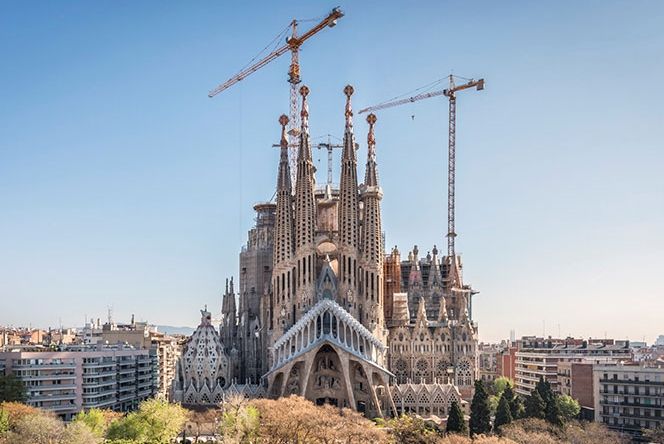
Frequently Asked Questions About Sagrada Familia History
Q. How old is the Sagrada Familia?
A. The Sagrada Familia is 140 years old.
Q. Who designed Sagrada Familia?
A. Sagrada Familia was designed by Francesco de Paula del Villar initially and was taken over and changed significantly under the lead of Antoni Gaudi.
Q. What was the inspiration behind creating the Sagrada Familia?
A. The origins of Sagrada Familia dates back to 1872, when a bookseller and founder of Asociación Espiritual de Devotos de San José Josep Maria Bocabella visited Vatican. He was inspired by the basilica at Loreto and wished to create a temple with a similar design in Barcelona.
Q. When did the construction of Sagrada Familia begin?
A. The construction of the expiatory temple of the Sagrada Familia began in 1882.
Q. Did they start building the Sagrada Familia over a hundred years ago?
A. The Sagrada Família, has been under construction for 140 years, with the work beginning back in 1882.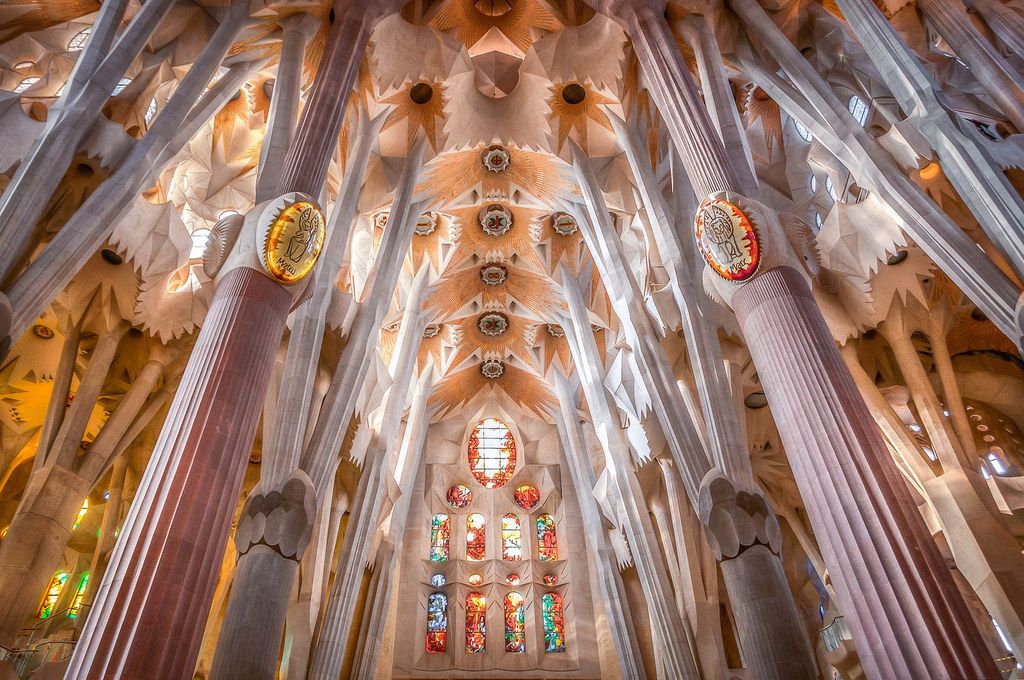
Q. What is the architectural style of the Sagrada Familia?
A. The architectural style of the Sagrada Familia is Catalan Modernism and has an influence of the Spanish Gothic style.
Q. When did the Sagrada Familia become a UNESCO World Heritage site?
A. The Sagrada Familia in Spain was inscribed on the World Heritage list in 2005
Q. Where is Sagrada Familia located?
A. Sagrada Familia is located in the city of Barcelona in Spain at C/ de Mallorca, 401, 08013 Barcelona, Spain.
Q. How much does it cost to visit Sagrada Familia?
A. The tickets for the Sagrada Familia start from € 34.
Q. Are there guided tours explaining the Sagrada Familia’s history?
A. Yes, there are guided tour options available that will help you understand Sagrada Familia’s history, architecture, and other nuances about the basilica better.
Q. What is the most interesting fact about Sagrada Familia’s history?
A.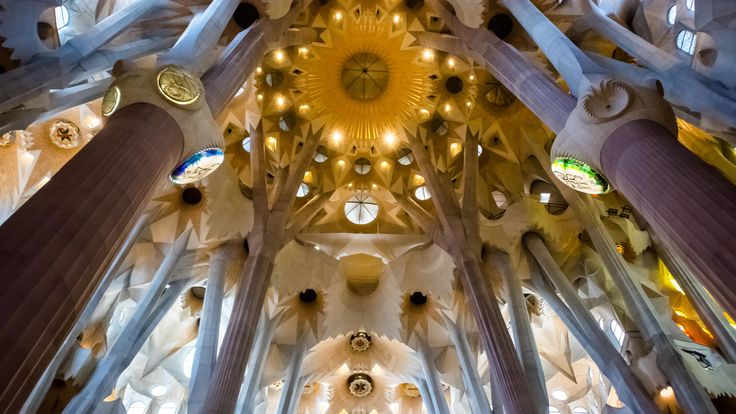
Q. What is Sagrada Familia famous for?
A. Sagrada Familia is famous for the iconic Nativity Facade and the crypt which are both UNESCO World Heritage sites.
Q. Is it worth visiting Sagrada Familia?
A. Yes, the grandeur of the Sagrada Familia encased in the many stories that the structure, the museum, and the guide tell you is an unmissable experience.
Sagrada Familia is the main temple of Barcelona. Spain in Russian
In Barcelona, the capital of Catalonia, there is a building that has been erected with minor interruptions for 120 years. But everything eventually ends. Founded in 1882, the grandiose Expiatory Temple of the Holy Family (“Sagrada Familia”) is gradually taking on the appearance of a completed creation. The way it was conceived by one of the greatest architects of the 20th century, Antonio Gaudí.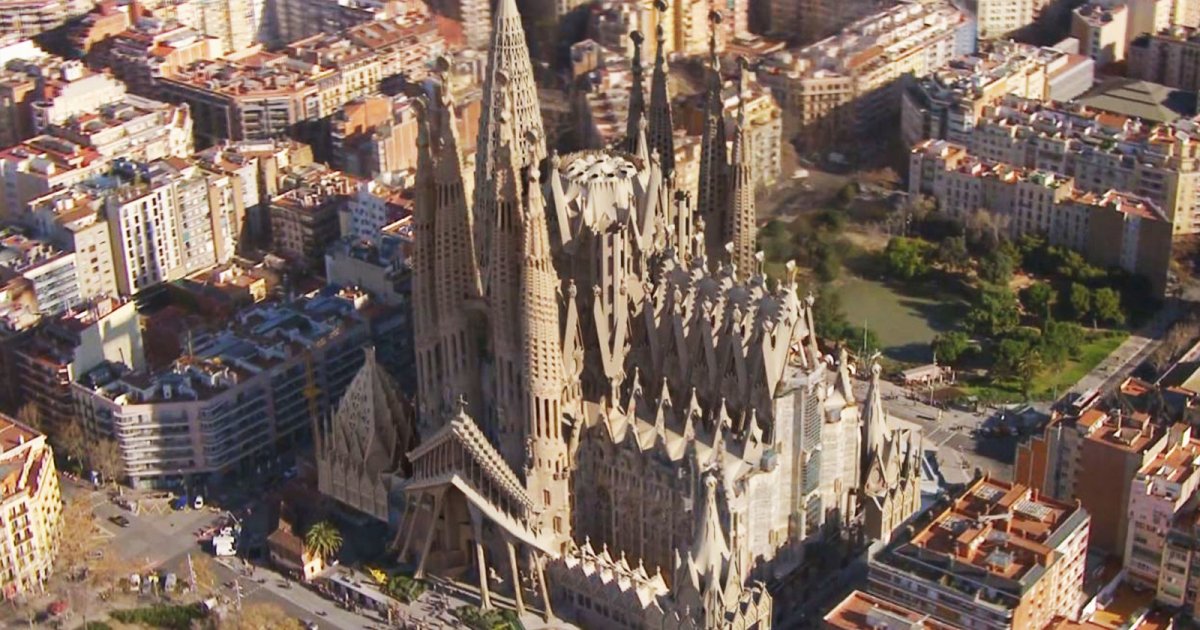
History of the construction of the Sagrada Familia
Order for the construction, or rather, for its completion (the temple began to build another architect), Gaudi received when he was barely 31 years old. On his account then there was only one building – a workshop for bleaching cotton. “According to legend, Señor Bucabelle, chairman of the Society of St. James, who acted as the main customer of the temple, once dreamed that the Sagrada Familia Cathedral would be erected by a blond with blue eyes. As you understand, there are not so many blue-eyed blondes among Spaniards, so when Bucabella saw Gaudi, he immediately understood: this is the same person, ”said art critic Angela Sanchez y Gargallo. In fact, the customers opted for Gaudi, most likely for reasons of economy – a venerable architect would have cost them much more. However, employers were disappointed, as already in the first years the estimate was exceeded many times.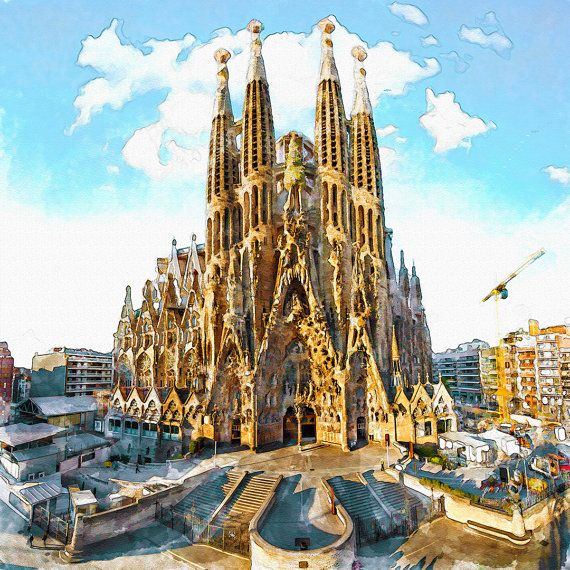
Gaudí set to work without a finished project. He generally preferred to improvise on the construction site. The architect simply could not work differently. He treated each of his creations as a living being, which should grow freely and naturally. For all the phantasmagoria of the forms created by Gaudi, they were never abstract, on the contrary, they always directly ascended to something existing in nature. When asked where he finds samples for himself, the architect replied: “In an ordinary tree, with its branches and leaves. All parts of the tree grow organically and seem beautiful because they were created by one artist – God. Drawing inspiration from wildlife, Gaudí created structures that seemed impossible to his colleagues. Only decades after the death of the architect, already in the computer age, it was proved that the engineering solutions that Gaudí came to intuitively fully comply with the laws of mechanics. In the Sagrada Familia temple, he “planted” a whole forest of columns with capitals in the form of branches.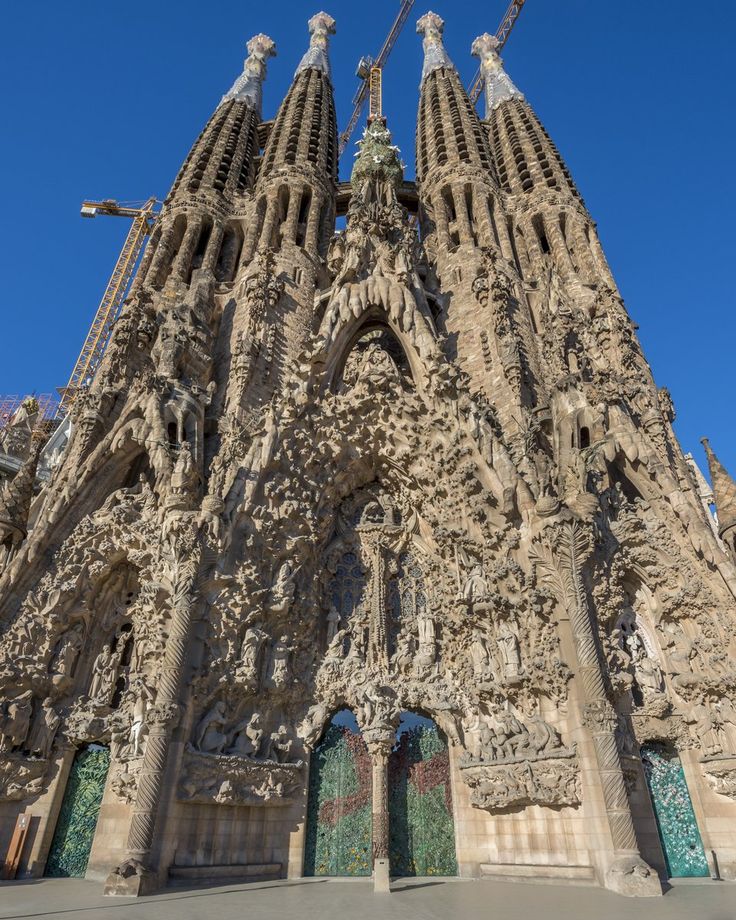
Gaudí’s contemporaries were sure that this vault would certainly collapse. The unique structures on which the vaults of the Sagrada Familia rest are reinforced concrete columns lined with basalt, sandstone or granite. These designs were invented by Gaudí himself. The columns go underground to a depth of 20 meters, and reach a height of 70 meters. Each of them can withstand a seven-point earthquake and wind gusts up to two hundred kilometers per hour.
Gaudi did not divide the elements of his buildings into functional and decorative, because in nature such a division does not exist. The pillars of the aqueduct he designed in Parc Güell look like ancient petrified tree trunks. He gave the appearance of ghostly warriors and stylized trees to ordinary pipes and outlets of ventilation shafts on the roof of the Casa Mila apartment building. Casa Mila, immediately nicknamed “La Pedrera” by the Barcelona people, that is, “The Quarry”, is remarkable not only for its dissimilarity to anything created earlier.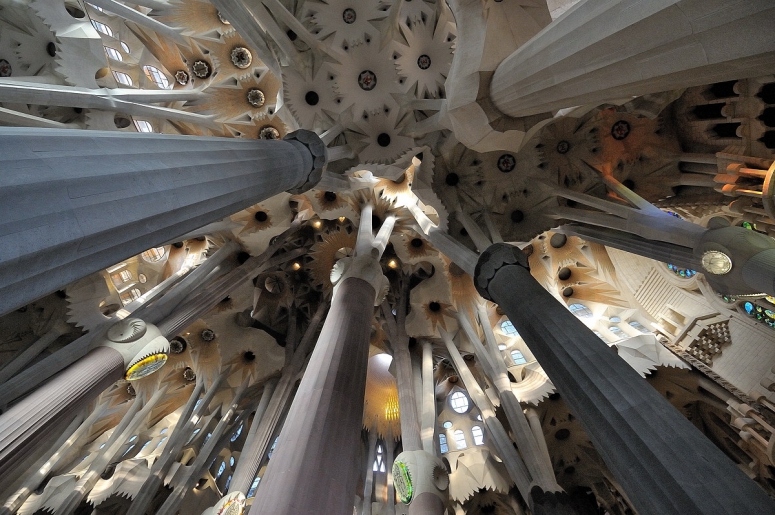
Confession of Antoni Gaudí and his tragic death
Attention was paid to Gaudi when he had already begun to build the Sagrada Familia temple, and not at all in connection with this project. In 1878, he built a summer villa for the manufacturer Manuel Vicens. The plan of the house was extremely simple, but the architect revetted the villa with multi-colored glazed tiles and decorated it with so many outbuildings and decorative elements that it turned into a fabulous Moorish palace. Gaudí’s first projects were admired by the wealthy philanthropist Count Eusebi Güell. According to his orders, Gaudí built several remarkable buildings and planned the city park. Although orders rained down on him from all sides, from 19For 14 years, Gaudí devoted himself entirely to the Sagrada Familia.
On June 7, 1926, the first tram was ceremonially launched in Barcelona. Only one event overshadowed that festive day – a few hours after the opening of traffic, some beggar old man fell under the wheels of the car. He was taken to the hospital, where he soon died. The body was about to be sent to a common grave. But one of the hospital staff identified the body. It was Gaudi… The architect was buried in the crypt of the Sagrada Familia, a temple that he considered the main work of his life.
Angela Sanchez y Gargallo wrote: “Gaudi understood that he would hardly have enough time to complete the construction of the temple. Therefore, in recent years, he retreated from his principle and began to make sketches and drawings for those who would come after him. There was a lot of controversy as to whether construction should continue. Those who believed that leaving the master’s work unfinished meant betraying his memory won.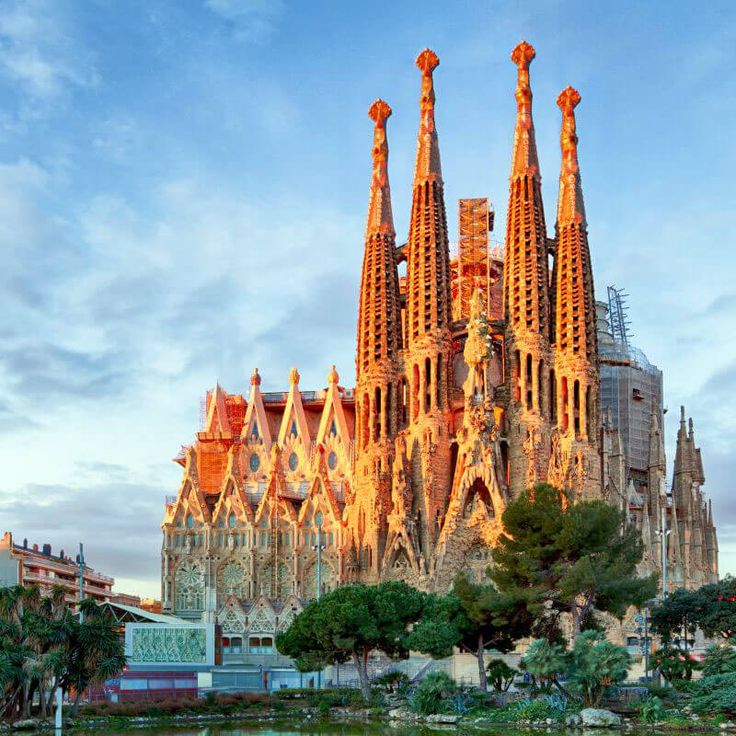
Many in Spain considered it blasphemous to interfere with the design of a genius. “It’s like attaching hands to the statue of Venus de Milo,” architect José Acebillo protested. Salvador Dali spoke even more categorically: “It would be a betrayal of Gaudi to complete the construction of the cathedral … It would be better to leave him hanging in the middle of Barcelona with a huge rotting tooth.” One way or another, but the construction continued.
In 1936, when the civil war broke out in Spain, the construction of the temple was interrupted. The anarchists, who at that time actually owned the power in the city, destroyed almost all the models and drawings of Gaudí. An interesting fact: the famous English writer George Orwell, who was then in Barcelona, reacted quite positively to this act of vandalism. The temple, in his opinion, should have been blown up altogether.
Architecture of the Sagrada Familia
According to Gaudí’s plans, the temple should have three facades: the Nativity, the Passion of the Lord and the Ascension of Christ.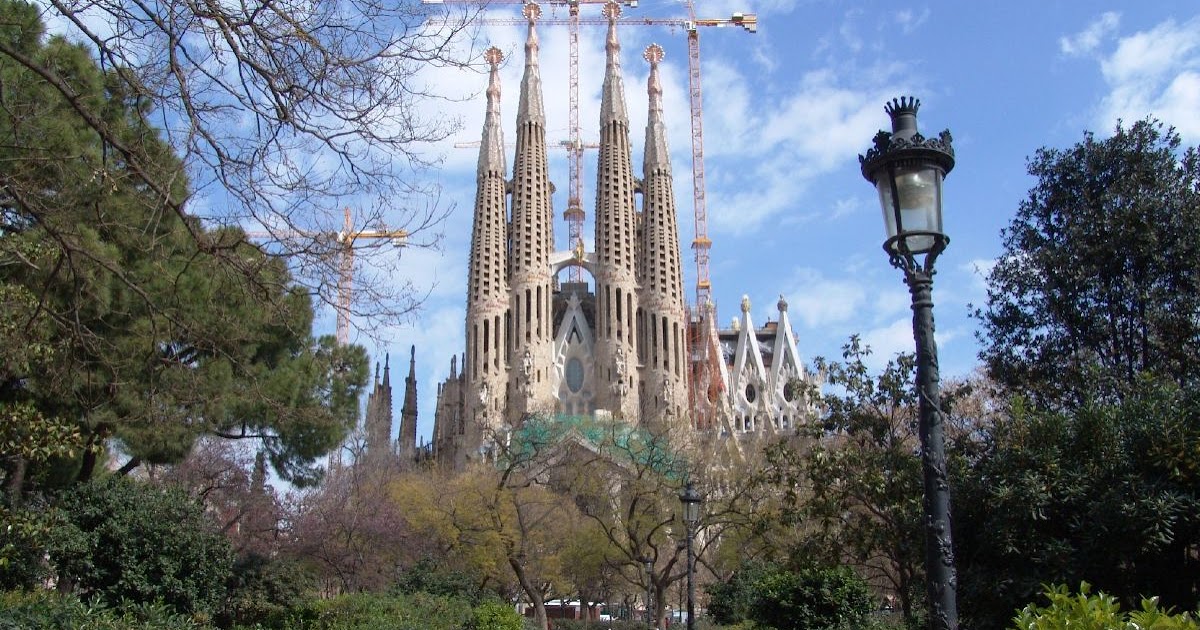
The sculptural groups of the facade of the Nativity are sculptured by Gaudí in life size. For the scene of the beating of babies, the architect made plaster casts of stillborn babies. To make a cast from an animal, he first put it to sleep with chloroform.
The opposite facade of the Passion of the Lord, built in our time according to the project of a modern architect, Barcelona residents do not like and call “Star Wars”. On the site of a residential area on Mallorca Street, the third, final part of the Sagrada Familia church will be built – the facade of the Resurrection of Christ. The fact that the Sagrada Familia is being completed by other architects is the rule rather than the exception in European history. Many grandiose Gothic cathedrals were built over the centuries. Thus, the construction of the cathedral in Reims took 270 years, in Milan – 550, and in Cologne – 632 years.
As in the Middle Ages, the Sagrada Familia temple is built on voluntary donations, including those euros that tourists pay for visiting the monument. Recently, every year only entrance tickets and the sale of souvenirs bring several million euros to the temple fund.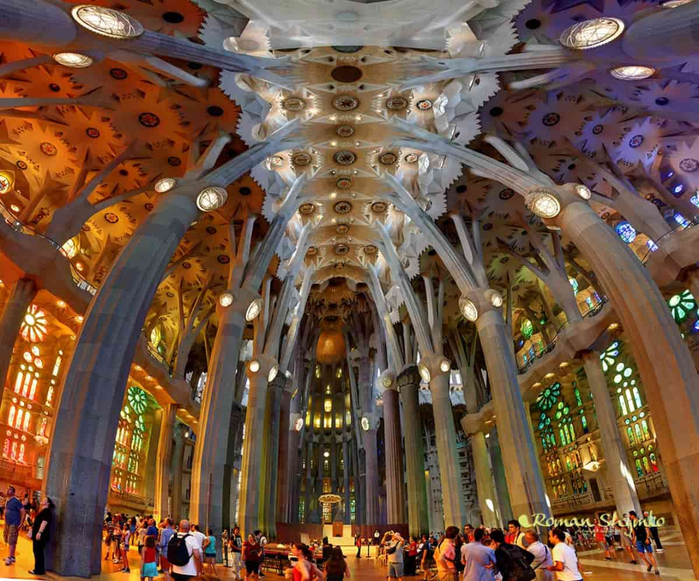
On November 7, 2010, Pope Benedict XVI consecrated the Sagrada Familia during his visit to Spain.
Ticket prices for the Sagrada Familia in 2016
Without tour: 15 euros.
Guided: €24 (Spanish, English, French, German).
With audio guide: 22 euros (in Russian, Spanish, English, French, German, Italian, Portuguese, Chinese).
With audio guide and tour of the towers: 29 euros.
Opening hours of the Sagrada Familia
November – February: from 9.00 to 18.00.
March: from 9.00 to 19.00.
April – September: from 9.00 to 20.00.
October: from 9.00 to 19.00.
Shortened day: December 25, 26, January 1, 6: from 9.00 to 14.00.
Official website: http://www.sagradafamilia.
If you are going to Barcelona, you should definitely visit these sights, Antoni Gaudí’s priceless heritage. Call the Center for Services for Business and Life in Spain “Spain in Russian”, and we will help you organize interesting individual or group tours of the unforgettable creations of Antonio Gaudi.
Now you can read the most popular articles about life in Spain and useful life hacks from insiders on our Yandex.Zen page. Subscribe!
Center for services for life and business “Spain in Russian” is your guide in the world of individual tourism. Organization of tours, routes, trips, tickets for various events, excursions with the best guides, organization of holidays. Services for demanding clients.
+7 495 236 98 99 or +34 93 272 64 90, info@espanarusa.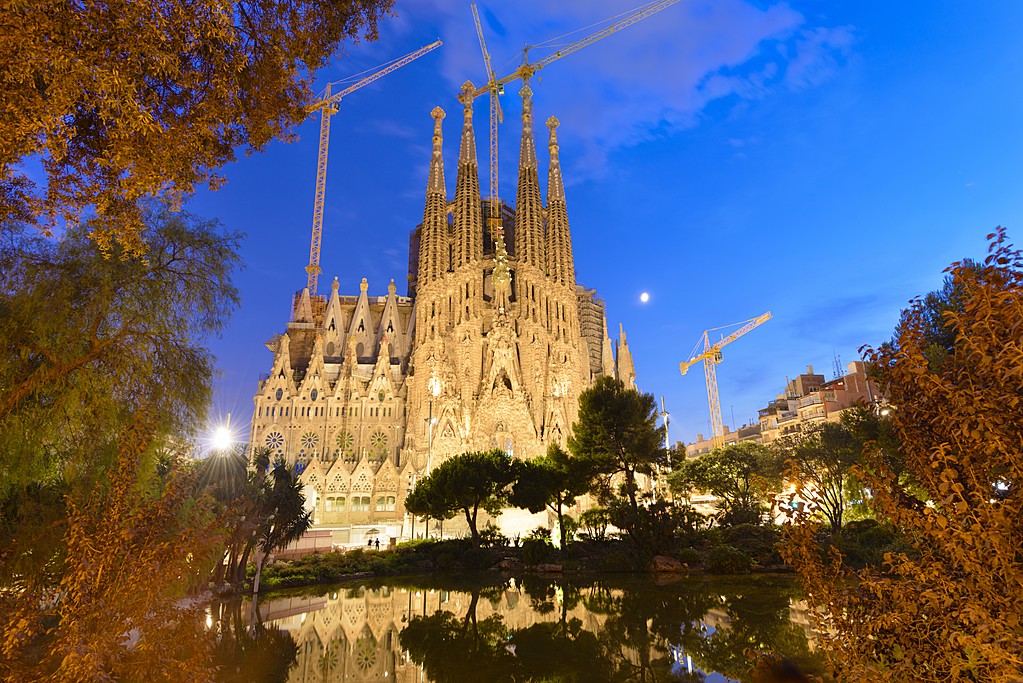
Sagrada Familia: Barcelona’s most famous temple
The Sagrada Familia is the symbol of Barcelona and its most popular attraction. A miracle of architectural thought, built on donations, summed up the career of Antonio Gaudi, who understood that he would not have time to catch the completion of work during his lifetime. The largest construction project in the city annually attracts the attention of millions of tourists from all over the world.
In the history of the Sagrada Familia, there is a very remarkable event that Antonio Gaudí would certainly have been delighted with – the consecration by Pope Benedict XVI, which took place in November 2010.
However, the status of the diocesan church of Barcelona is not the brainchild of Gaudí, but the Cathedral of the Holy Cross and Saint Eulalia. The fact is that the Expiatory Church of the Holy Family is being built on land that does not belong to the church. The only source of funding for the project of Antonio Gaudí and other architects involved in the work was and remains private donations.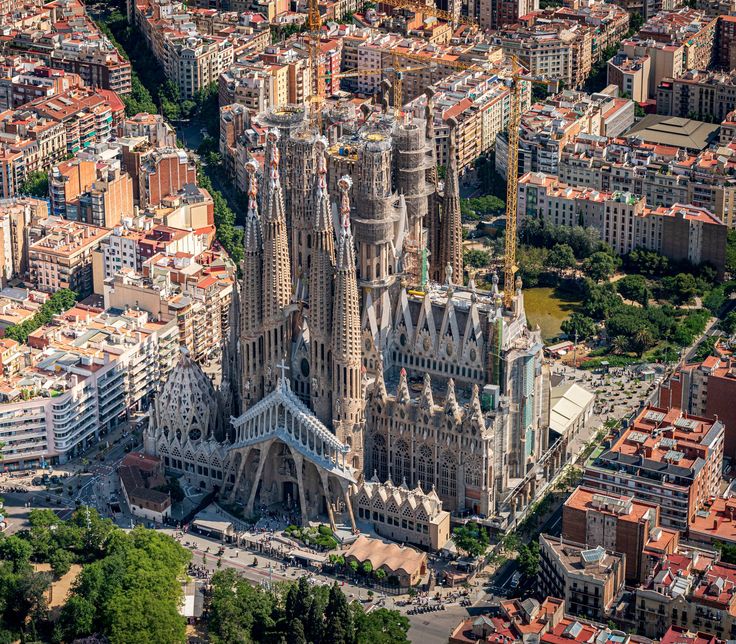
History of the construction of the Sagrada Familia
- The idea to build the Expiatory Temple in Barcelona dates back to 1874. The amount collected on a voluntary basis only convinced that the project should be launched without delay.
- In 1881, a plot of land for the construction of a temple was purchased a few kilometers from the city. Since then, Barcelona has seriously increased in size. And now the temple is located in its central part.
- Before Antoni Gaudí, the construction of the temple was carried out under the guidance of the architect Francisco del Villar.
- The foundation stone was laid on March 19, 1882.
- According to the original project, a Neo-Gothic basilica in the shape of a cross, based on 5 longitudinal and 3 transverse naves, was to appear near Barcelona.
Francisco even designed a huge apse with seven chapels, a bypass gallery of the temple behind the choir stalls. Gaudi’s predecessor explained the inclusion of the cloister in the project by the need to connect 3 monumental facades. However, at the end of the year, the architect could not agree with customers from Barcelona on a number of issues, which led to his resignation.
Del Villar was replaced by Antoni Gaudí, who completed the Sagrada Familia crypt before the end of the decade. Above the foundation laid by the former leader, a vault with decorative elements arose. Under Antonio Gaudi, a small moat appeared around the crypt of the Sagrada Familia. It protected the structures from dampness and ensured a better supply of sunlight.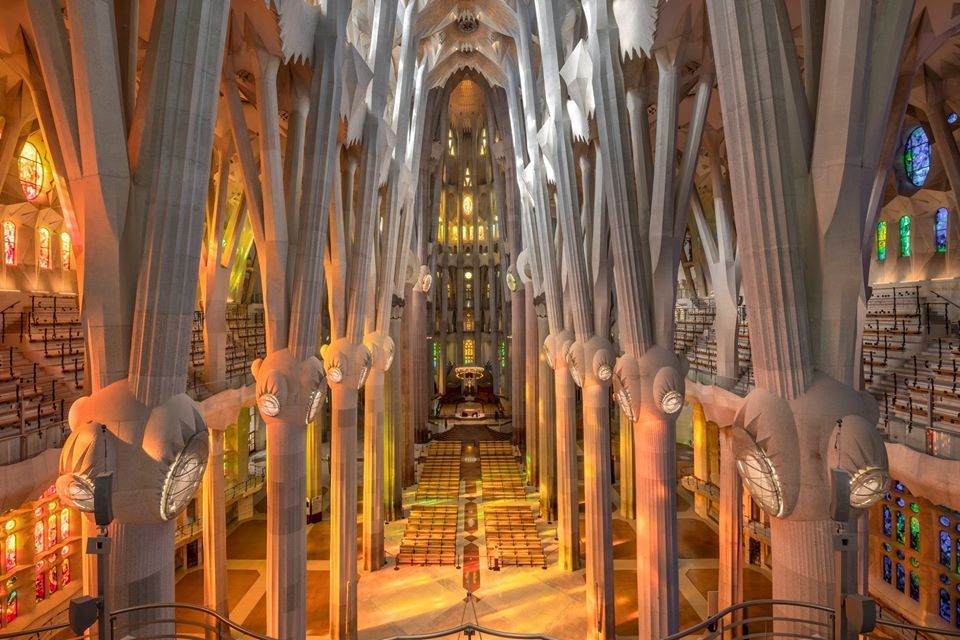
Sagrada Familia, 1905
Interesting fact
Gaudi systematically worked on the Sagrada Familia, developing the ideas that make up the basis of the concept. However, during the construction of the neo-Gothic basilica, a huge donation was made from a person who wished to remain anonymous. This turn of events allowed Antonio Gaudi to improve the project, and the architect decided to make major changes.
The original form of the future pearl of Barcelona remained the same, but, according to Antonio Gaudí, monumental towers should have decorated the appearance of the temple. The Sagrada Familia was transformed in such a way that the new idea included the scenery necessary to tell stories about the coming of the Kingdom of God. This was very important for Antonio Gaudí.
In order to avoid long queues at the entrance to the Sagrada Familia, we buy tickets in advance via the Internet here .
Facades of the Sagrada Familia
When looking at the Sagrada Familia, you can see 3 facades:
- Facade of the Nativity
- facade of Glory
- and facade of the Passion of Christ
According to Gaudi’s original idea, they were to be lined with ceramics of different colors and glass, but later plans for this component of the Sagrada Familia changed.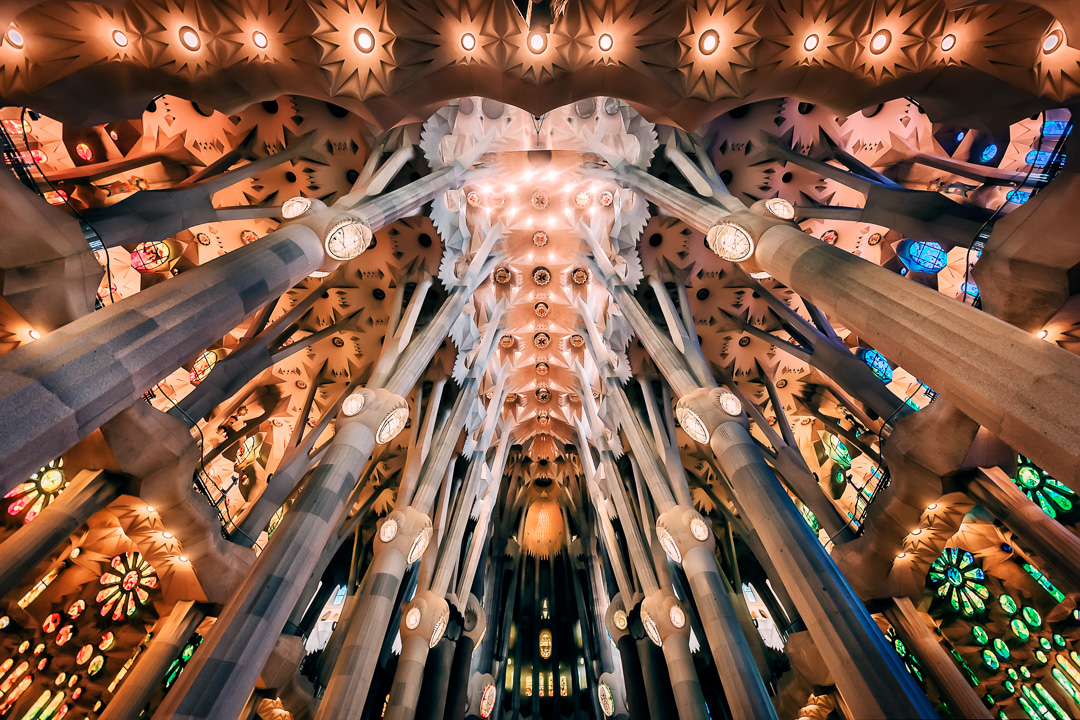
- In 1892 in Barcelona, Antoni Gaudí began work on the Nativity façade. He explained his choice by the fact that the part depicting the crucifixion of Christ, apart from others, could frighten the inhabitants of Barcelona and negatively affect the reputation of the temple.
- The neo-Gothic apse of the temple appeared in its final form in 1895. Antonio Gaudí was inspired by the Catalan flora and fauna when decorating it.
- Completion of works on the portal of St. The Virgin of the Rosary is dated 1899.
- In 1910, a parochial school was founded in Barcelona at the Sagrada Familia. Since it was a temporary structure, the design of Gaudí’s new idea did not imply the presence of load-bearing walls.
- A special approach to the design of curvilinear partitions and roofing guaranteed the strength of Antonio Gaudi’s creation, and the ability to change the internal layout of the building at the temple greatly simplified operation.
- In 1911, Gaudí proposed a design for the Passion façade.
However, in its final form, with an approved version of the vaults and naves, the solution of Antonio Gaudí was presented in Barcelona more than 11 years later.
The idea of the Sagrada Familia façade of Glory can only be judged from the surviving sketches. It is believed that Antonio Gaudí hoped to realize a “forest of columns”, which would be flooded with light penetrating the temple’s stained-glass windows at different heights.
At the end of November 19On the year 25, a hundred-meter bell tower appeared in the church in honor of St. Barnabas. She was one of the last elements implemented before the death of Antoni Gaudí.
The death of Antoni Gaudí
On June 7, 1926, a tragic incident occurred in Barcelona that changed the course of construction: Gaudí knocked down a tram. Due to the lack of documents with him and very modest clothes, the architect was assigned to the Barcelona hospital for the poor, where he was provided with insufficiently qualified assistance.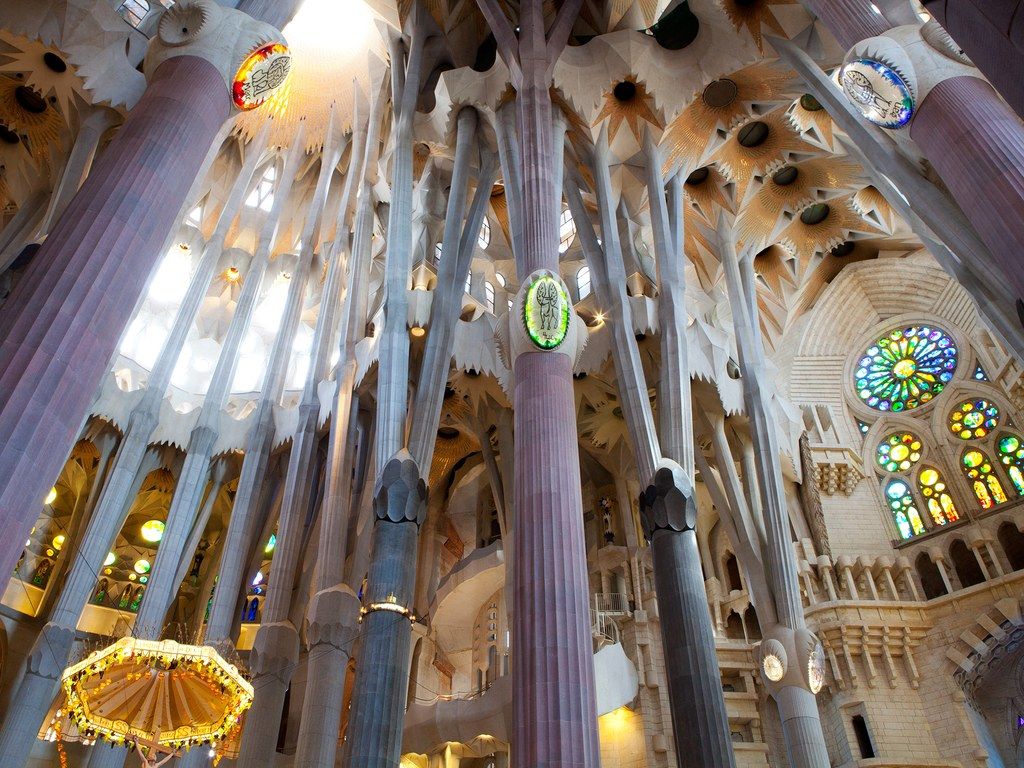
On June 10, 1926, the architect died. Gaudi was buried in the crypt of the temple under construction so that he could watch the construction of the temple even after death.
How Sagrada Familia was built by followers of Antonio Gaudi
The next architect was Domenech Sugranes, the most talented student of the maestro. He collaborated with Gaudi in the development of the Sagrada Familia project and helped him in the construction of the houses of Batllo and Mila.
- Between 1927 and 1930, the 3 remaining columns of the Nativity façade were completed in Barcelona, along with the ceramic cypress that adorns the central entrance. In addition, Sugranes continued Gaudi’s research, dealt with the issue of structural rigidity until his death at 1938 year.
- The construction of the Sagrada Familia was delayed due to the Civil War.
- A fire in 1936 brought additional problems, destroying the works in Gaudí’s workshop.
Fortunately, years later, some of the developments were restored.
- Work on the temple was resumed only in 1952.
- In the same year, the façade was illuminated and the staircase designed by Gaudí was presented in its final form.
- A couple of years later, the construction of the Passion façade began. The basis was the solutions invented by Antonio Gaudí in 1892-1917.
- In 1961, the crypt was completed, which today houses a museum dedicated to the features of the project and its creator.
- The Passion façade of Antoni Gaudí’s version of the temple was completed with four towers in 1977.
- Already in the next decade, work began on sculptures that should decorate the appearance of Antonio Gaudi’s idea, completed only in the new century.
- In the same time period, the project of the Sagrada Familia was decorated with stained glass windows in honor of the Resurrection of Christ.
The shape of the bell towers, similar to sand castles, was chosen by Antonio Gaudi not by chance.
The fact is that it is optimal for placing spiral staircases.
Even taking into account the fact that at present the temple is not experiencing financial problems, in the past decade, Gaudi managed to complete only the transepts and the nave, their facades and vaults. The crossroads and apse were completed in 2010. The main 170-meter tower, decorated with a cross, according to Antonio Gaudi, symbolizes Jesus Christ. The tower above the apse is dedicated to the Virgin Mary. Another element that reveals the idea that Antonio Gaudí came up with.
4 towers of the Sagrada Familia
The current plan for the construction of the Sagrada Familia includes 4 towers in honor of the Evangelists. Each will be crowned with a sculpture:
- Luke – calf
- John – eagle
- Matthew as an angel
- Brand – lion
The 12 towers above the façades of the Gaudí project symbolize the 12 apostles. They are decorated with bunches of grapes, as well as sheaves of wheat – the attributes of Communion.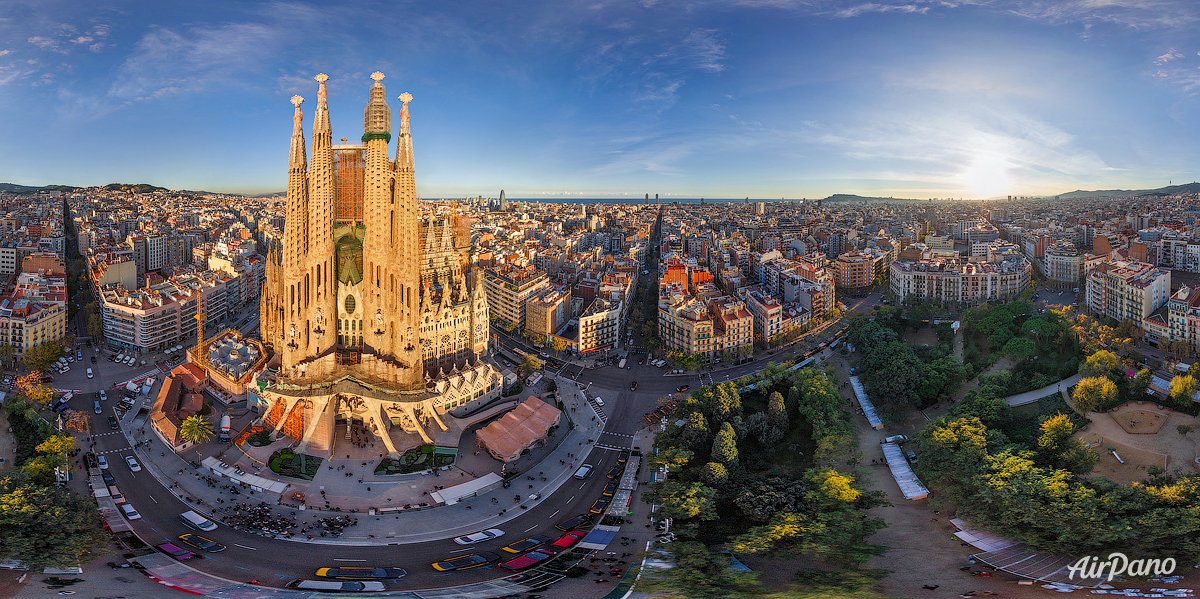
The interior of the temple in Barcelona
Gaudi was sure that he would not be able to live up to the moment when the temple was 100% ready. For this reason, he thought through all the components of the concept in advance, including the most insignificant ones. This approach of Antonio Gaudi to work is the answer to the question why the church managed to become one of the unique architectural projects. Antonio Gaudi strove to use figures with a ruled surface, which simplifies the implementation of ideas. But at the same time – it does not harm the aesthetics.
Fortunately, at the moment there is no shortage of funds for the construction of the Sagrada Familia. Money is donated not only by believers from Barcelona and Catholics from all over the world. Representatives of other religions also take part.
Inside view
The method of financing is not the only reason that influenced the timing of the construction of the Sagrada Familia in Barcelona. Difficulties are also caused by the technology used to process stone blocks, which was used even under Antoni Gaudí. Despite the help of modern software tools, it is required to process and adjust each block individually.
Sagrada Familia Expiatory Church fascinates not only with its appearance, but also with the way Gaudí and his followers organized the interior.
Inside the temple is decorated with:
- stucco molding
- frescoes
- mosaics
- sculptures
- painted
Antoni Gaudí’s skill is evident in experiments with rooms.
The unique play of light and shadow is realized due to the large number of windows.
Antonio Gaudí regularly used religious texts for decoration.
According to Gaudí’s idea, the main load-bearing elements of the temple are the columns, which evenly distribute the weight of the vaults and towers. The height and section of the elements depend on the magnitude of the applied load.
Information for tourists wishing to enjoy the masterpiece of Antonio Gaudí
Address
Barcelona, Via Mallorca, 401.
See the best hotels nearby at on Booking.com.
How to get to Sagrada Familia in Barcelona
Metro: Sagrada Familia station on the blue and purple lines L2 and L5.
Bus: 19 33 34 43 44 50 51
Opening hours
Summer season: from April to September – daily 9-00 – 20-00
Winter season: October to March – daily 9:00 – 18:00
Holidays: December 25, 26, January 1, 6 – from 9:00 – 14:00
Location of the temple in Barcelona
-
How to avoid queues at Barcelona attractions.

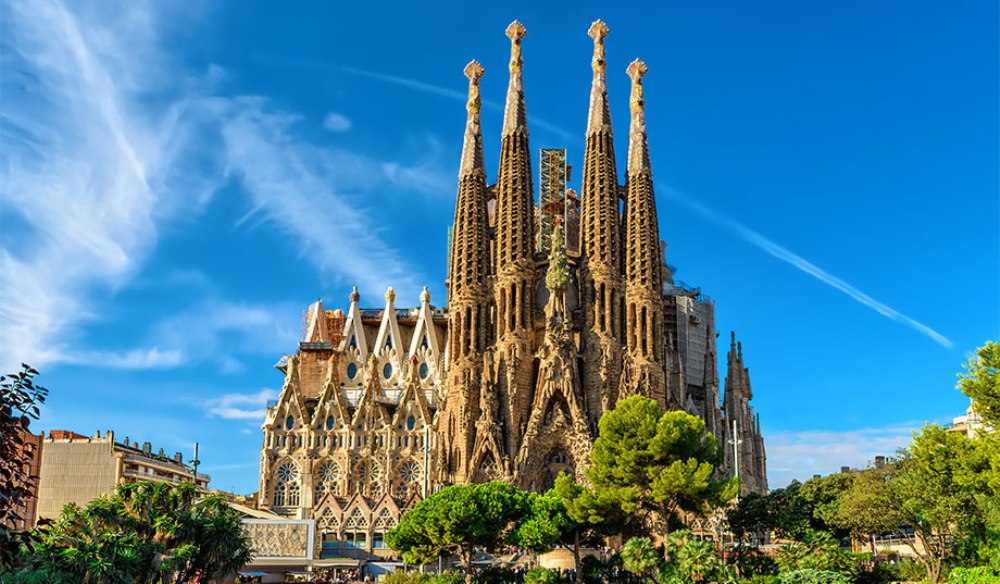
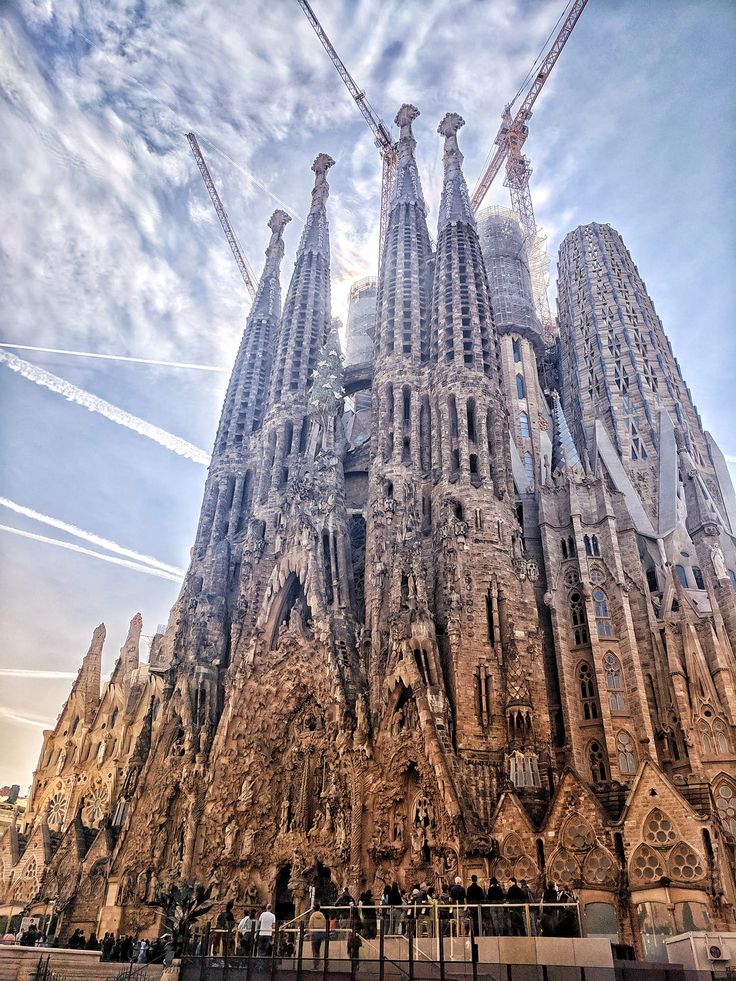 However, in its final form, with an approved version of the vaults and naves, the solution of Antonio Gaudí was presented in Barcelona more than 11 years later.
However, in its final form, with an approved version of the vaults and naves, the solution of Antonio Gaudí was presented in Barcelona more than 11 years later. 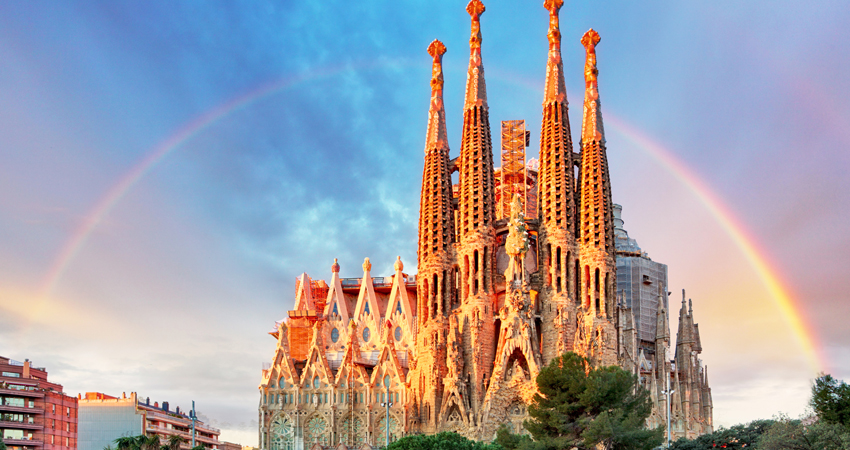 Fortunately, years later, some of the developments were restored.
Fortunately, years later, some of the developments were restored. 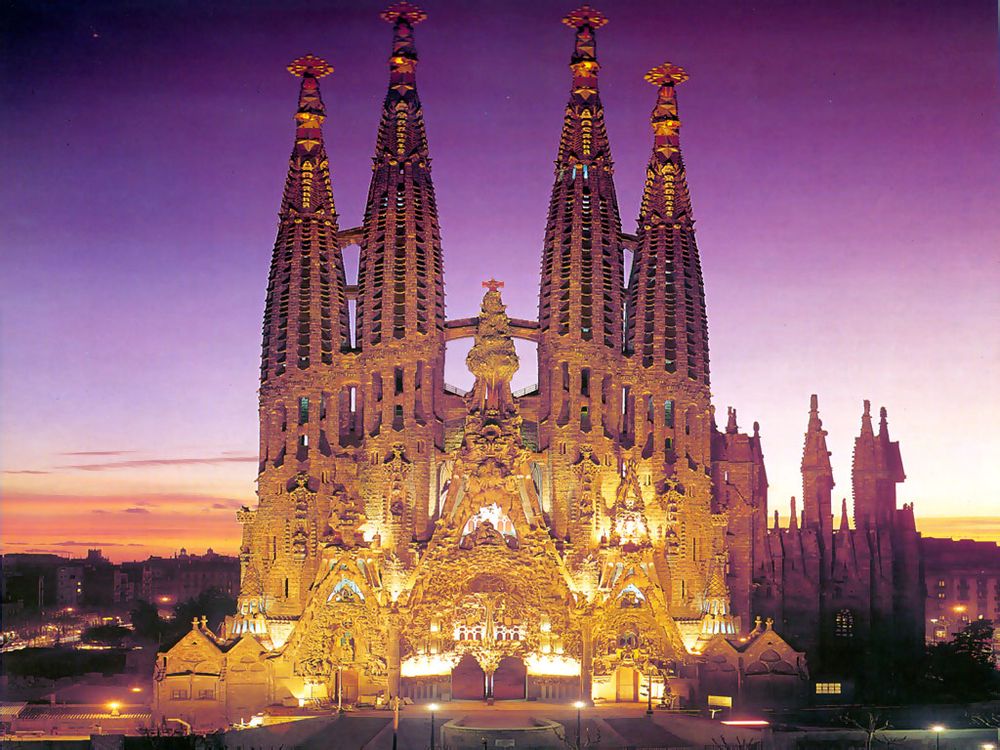 The fact is that it is optimal for placing spiral staircases.
The fact is that it is optimal for placing spiral staircases. 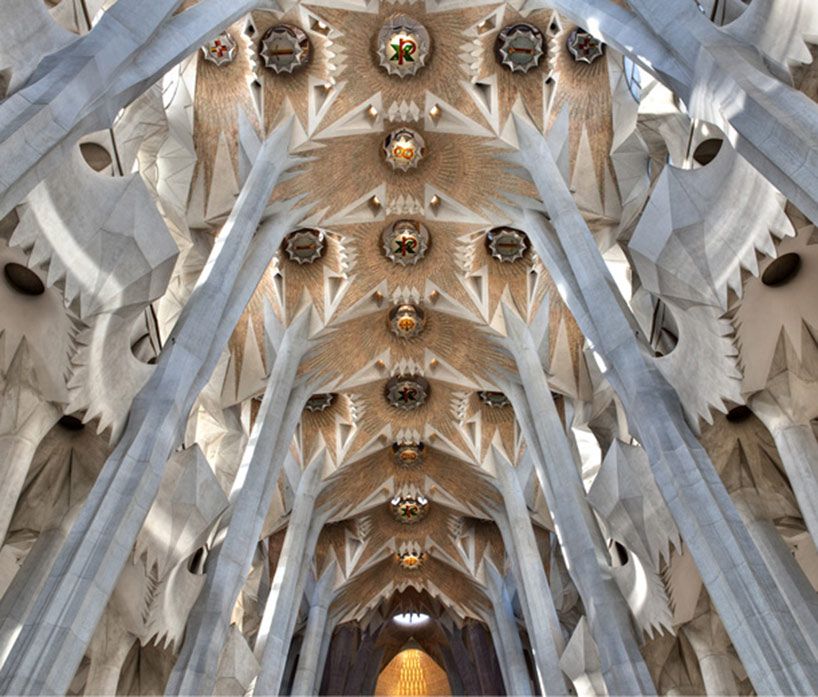 The unique play of light and shadow is realized due to the large number of windows.
The unique play of light and shadow is realized due to the large number of windows. 
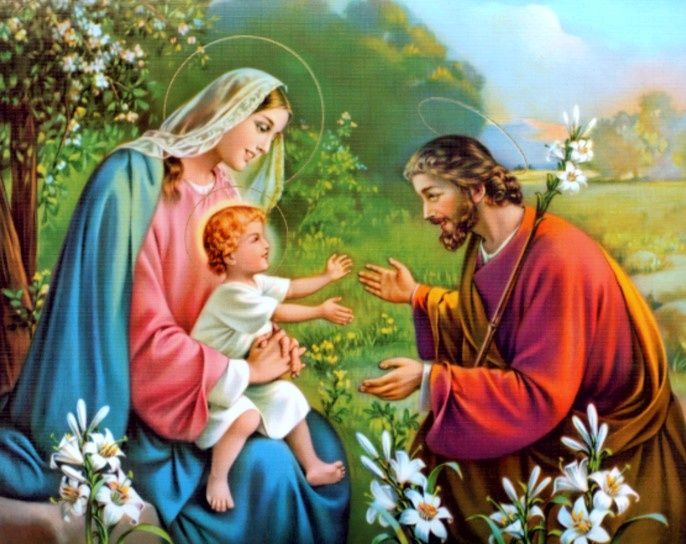 La idea original de la serie fue concebida por el guionista mexicano Manolo Caro en 2019[5].
La idea original de la serie fue concebida por el guionista mexicano Manolo Caro en 2019[5].
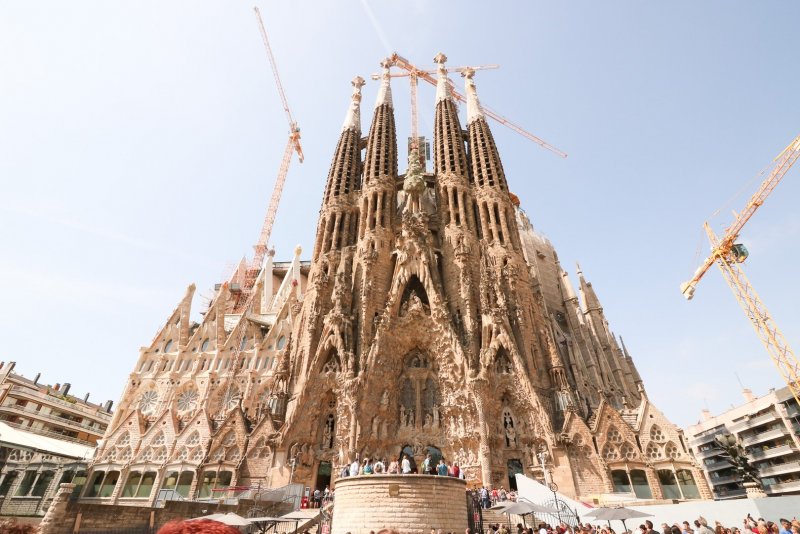
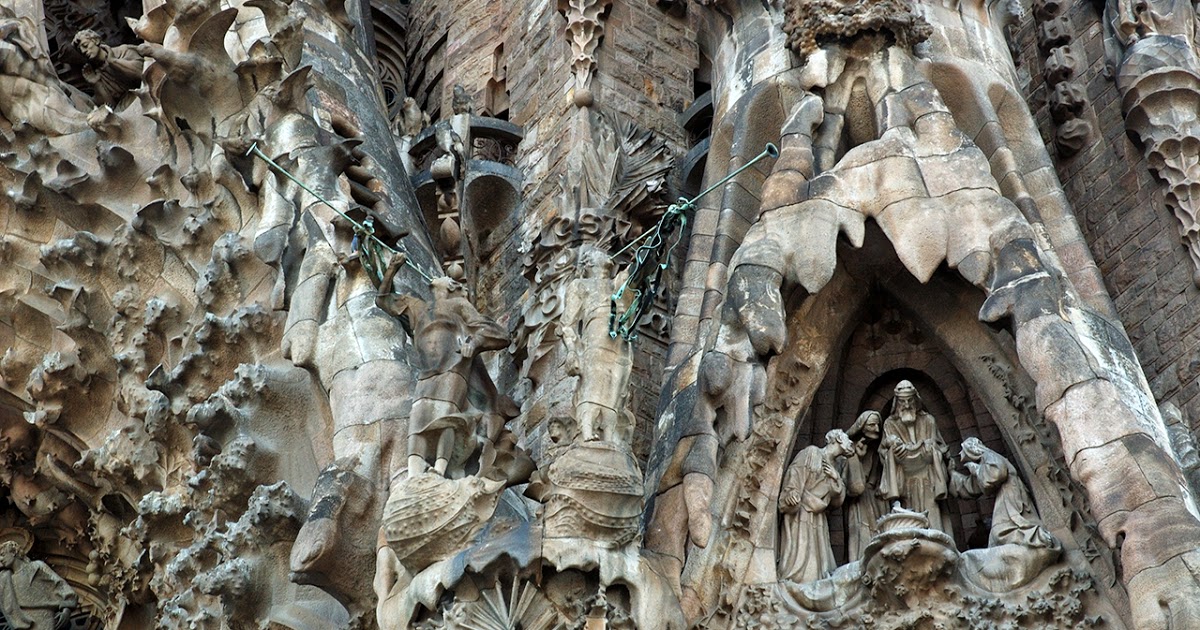 Si dentro de la octava de la Navidad hay un domingo, la fiesta de la Sagrada Familia se hará ese día. De lo contrario, la fiesta se fijará el 30 de diciembre.
Si dentro de la octava de la Navidad hay un domingo, la fiesta de la Sagrada Familia se hará ese día. De lo contrario, la fiesta se fijará el 30 de diciembre.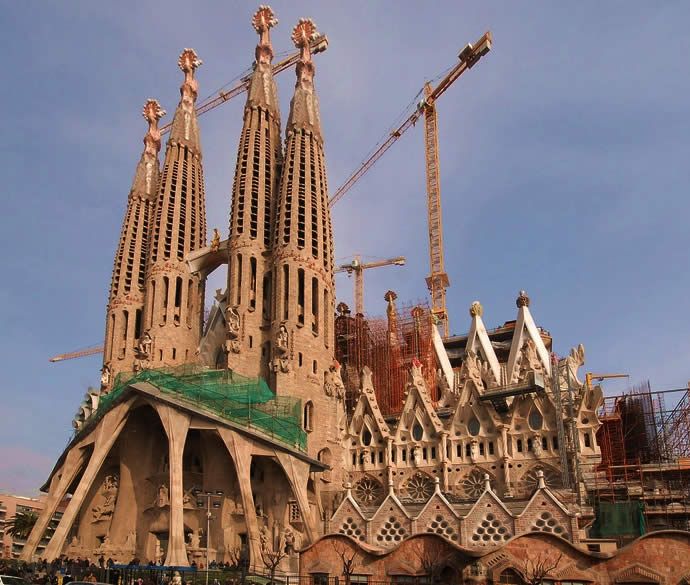 Debido a conflictos con Bocabella se llama finalmente a Antoni Gaudí en el año 1883 para que asumiera el proyecto.
Debido a conflictos con Bocabella se llama finalmente a Antoni Gaudí en el año 1883 para que asumiera el proyecto.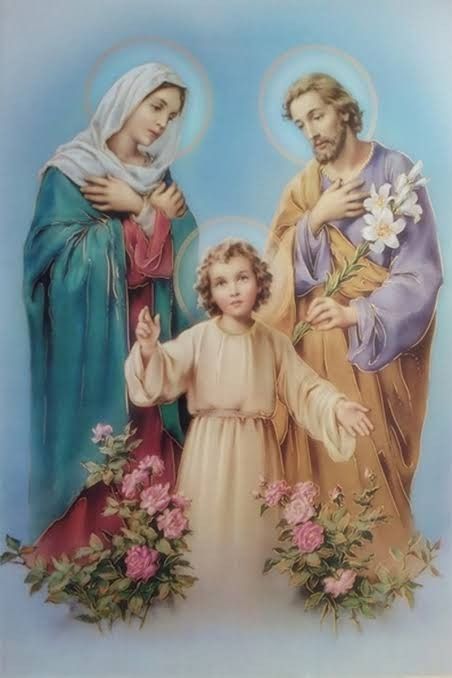 Llamadas también como ‘ciclos de espacialidad curva’.
Llamadas también como ‘ciclos de espacialidad curva’.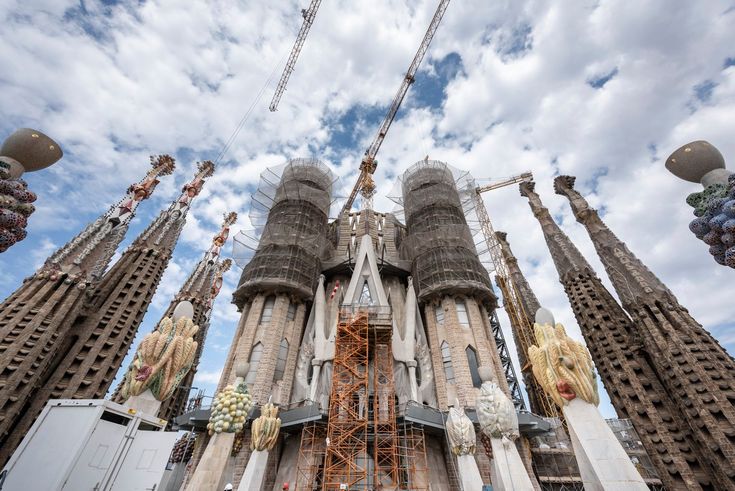 21
21 
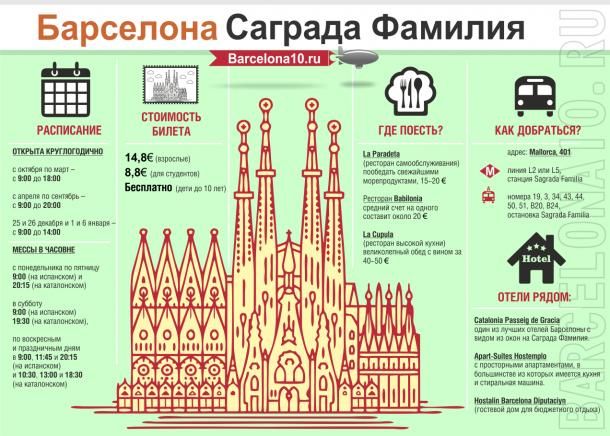
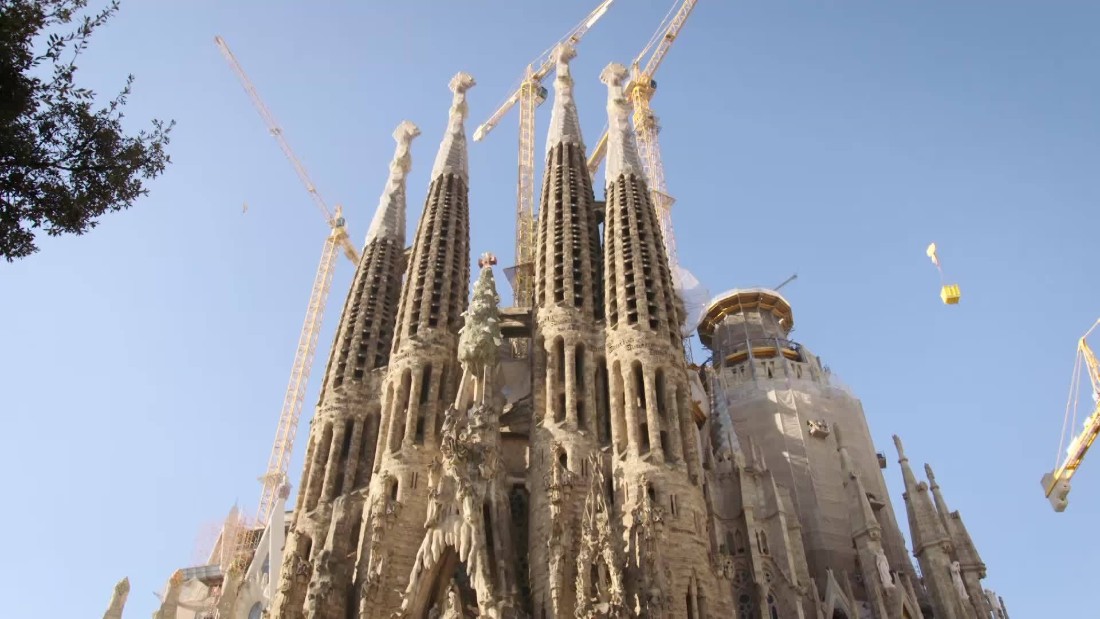 UU. y otras noticias de la jornada 10/18/2019
UU. y otras noticias de la jornada 10/18/2019
